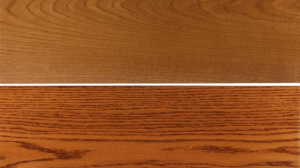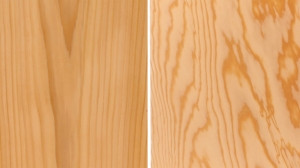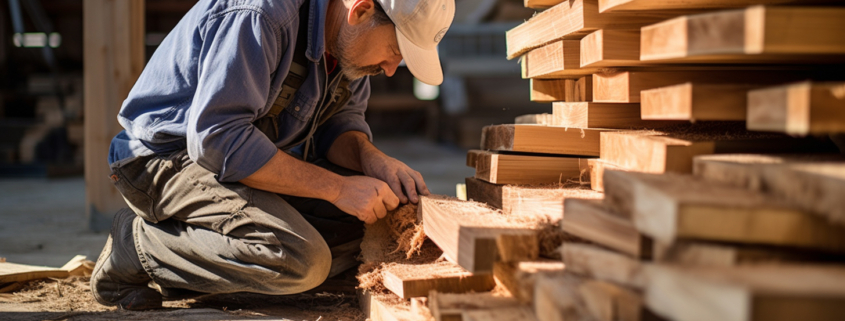The 8 Best Wood Types For Woodworking DIY Projects
It’s no secret that woodworking – even just as a hobby – comes with a lot of benefits. Not only do you end up with a beautiful DIY project (whether it be a handmade musical instrument, baseball bat or fine furniture), but it also leaves you feeling a zen-like calm.
No matter what the item might be, good DIY projects start with good building materials. And that means you have to be selective about what type of wood you’re using. It’s important to know how the different wood types stack up against each other when it comes to woodworking so that you can make the best choice for your project’s needs.
Before Picking Between Different Types of Wood…
Before looking at specific wood species, you have to consider what type of wood is going to suit your project and, of course, your skill level. You also want to consider what the grain pattern will look like and how it will affect the appearance of your finished project.

Hardwood and Softwood
There are two categories of wood species – hardwood and softwood. Hardwood comes from deciduous trees that lose their leaves annually (such as red oak or white oak). Softwood typically comes from coniferous trees like Douglas fir. Hardwood species take longer to mature, meaning the wood is denser, which results in a strong wood that requires some skill and power tools.
To determine the hardness of a type of wood you can check its Janka rating. How hard it rates on the Janka scale determines how much wear and tear it can endure, but it also means it makes it harder to carve.
Hardwoods are also more water resistant than softwood, making them ideal for outdoor furniture or outdoor projects like boat building. Certain hardwoods are also an excellent choice when it comes to cutting boards.
Grain Patterns
Some of the durability and water resistance of the wood is going to be determined by the species’ grain pattern. The grain pattern will also affect the look of the finished product.
There are two main types of grain patterns – open and closed. Open grain patterns have large, visible pores that are noticeable to the eye. Closed patterns have smaller pores, a more subtle appearance and are ideal for food-safe projects. Examples of open-grained woods include oak, hickory and ash. Closed grain options include species like beech, maple and cherry.
The sawing technique used also impacts the look of the lumber’s grain. Sawing methods include plain sawn, quarter sawn, rift sawn and live sawn. Plain sawn creates the traditional cathedral pattern seen in many older homes. Quarter and rift sawn show off a vertical, straight grain pattern, but the difference is that quarter sawn boards also have dramatic flecking. Live sawn delivers a full spectrum of natural characteristics and a varied grain.
Best Types of Softwood for Woodworking Projects
If you’re working on a smaller DIY project, or one that doesn’t need to be especially durable, softwood may be the best way to go (especially if you are just starting out on your woodworking journey and need an easy lumber to cut). Keep in mind, however, that just because it’s called a softwood, doesn’t guarantee it is soft. While softwoods in general have a lower Janka rating, some can rate quite high on the scale.

Red Cedar
Red cedar is a popular choice for DIY projects. It’s rot-resistant which makes it an excellent choice for outdoor furniture building or projects that need to be weather-resistant. It’s also a beautiful wood to work with, boasting a pinkish brown in its heartwood and some pale yellow hues throughout. The smell is also a plus – in fact, blocks of cedar are used as natural wardrobe fresheners, making it an ideal choice if you want to create a closet, dresser or chest.
Redwood
Redwood has a beautiful reddish-brown color, and is actually extremely durable despite its lightweight and how easy it is to cut with beginner woodworking tools. It’s a popular choice for paneling as well as structural beams for construction projects since it is resistant to warping and shrinking.
Douglas Fir
A common type of wood used in trim and furniture making is the Douglas fir. It has a warm honey-colored tone and an interesting grain pattern that adds to the look of the finished project. Douglas fir can be difficult to work with when it comes to hand tools, however, because of how coarse it is. It is also more likely to warp and splinter than redwood.
Pine
Pine is a great beginner’s wood to use in your DIY projects. It’s lightweight and easy to work with compared to other types of wood. It’s also on the inexpensive side compared to more exotic wood. This type of wood is more prone to rot and insect damage, though, and if it isn’t prepared properly it may warp or shrink. Still, if you want to practice some of your woodworking skills before tackling bigger home improvement projects, pine is the right wood to start with.
Best Types of Hardwood for Woodworking Projects
Hardwoods are more resilient and durable than softwoods, which can make them more difficult to use in woodworking projects without power tools. Of course, it’s possible to cut any lumber with a handsaw, it just may take a little more effort. Here are some of the best picks for DIY woodworking projects on the hardwood lumber market.

Walnut
Walnut is widely known for its beauty and adaptability when it comes to woodworking. Black walnut is extremely durable and adheres well with wood glue. It also accepts steam bending and is best finished with hand sanding.
Poplar
Poplar is a softer hardwood – which means it’s more susceptible to denting and scratching – but it’s also one of the easiest building materials for beginner woodworkers. It has a nice, even light brown tone. It’s also the cheapest hardwood at the lumberyard – so it’s a great option for woodworkers looking to get some practice in. However, it’s not the best choice for building high-quality, fine furniture.
Teak
Heat-resistant, durable, and heavy, teak is a great choice for projects that last for decades and is a solid wood choice for building high-end furniture. Its durability and smooth surface make it ideal for tool handles – although the cost of the wood may make you want to save it for special DIY occasions.
Cherry Wood
American cherry wood is a popular choice for woodworkers. It’s abundant throughout North America, and over time, the heartwood darkens to a beautiful reddish-brown color. The sapwood has a pale yellow color similar to red cedar. It’s soft enough to work with, but still durable. It is, however, slightly more difficult to stain, but its natural beauty makes up for that!
Red Oak and White Oak
Red oak or white oak is an excellent choice for woodworking. Red oak is the perfect balance of workable and durable, not to mention it has a beautiful wide grain pattern and warm red tint. The pores do make it a little less water-resistant than other woods, so be sure to keep that in mind.
White oak, however, is very water-resistant and durable. It’s become a popular choice for kitchen cabinets and hardwood flooring. White oak grows throughout the eastern United States, and while it’s slightly more expensive than red oak, both are affordable options for woodworking projects.
Get the Best Wood From Baird Brothers
Inspired to get your next DIY woodworking project going? Then stop by our expansive online store – all expert millwork that is sure to set your project up for success. We’ve got a wide selection of poplar, red oak, hard maple and other high-quality wood types for woodworking – all waiting for you to turn them into something amazing!



